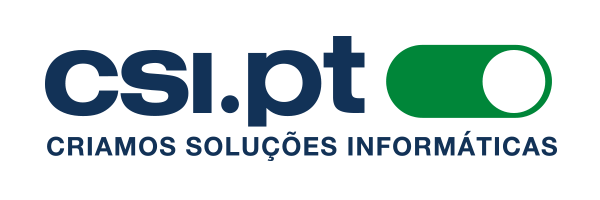


Home |
Temáticas |
Catálogos |
Pedidos |
  |  |
|||||||
|

|
RUGENDAS. (Johann Moritz) HABITANTE DE GOYAS, QUADRO A ÓLEO PINTADO SOBRE MADEIRA. |
|
|
Clique nas imagens para aumentar. GOYA Y LUCIENDES. (Francisco) LOS PROVERBIOS.[DISPARATES] Coleccion de diez y ocho láminas inventadas e grabadas al agua fuerte POR DON FRANCISCO GOYA. Publícala la R! Academia de Nobles Artes de San Fernando. MADRID 1864. Lit. de J. Aragon, Urosas 10. In fólio oblongo de 31,5x42,5 cm. Com (i)-[frontispício litografado) + 18 gravuras. Encadernação inteira de chagrin preto com nervos e filetes nas pastas. Guardas em damasco com motivos decorativos vegetalistas, enquadradas por magnificas seixas triplas douradas. Trabalho executado na Biblioteca Nacional de Lisboa em 1923, por J. A. da Fonseca, dourador A. Pinheiro. Trata-se da segunda edição ou tiragem (com numeração no canto superior direito) da mais importante série de gravuras do autor. As chapas abertas a água-tinta, buril e ponta seca entre 1816 e 1823, só foram publicadas em série em 1864 com tiragem de 250 exemplares. Exemplar com leves picos marginais de acidez (foxing). Palau 1990, III 388. Vindel, 34. Harris III, 248 - 265. Francisco José de Goya y Lucientes (1746-1828) é o mais importante dos pintores e gravadores espanhóis. Goya nasceu em Aragão, Espanha em 1746 e como era costume na época começou por fazer cópias de pinturas de vários mestres. No final de 1771 inscreveu-se em concurso na Academia de Belas Artes de Parma, recebendo uma menção honrosa e a sua primeira encomenda. A partir daí seguiram-se encomendas para o Palácio de Sobradiel e para o Monastério Aula Dei. Entre os anos de 1773 e 1774 foram executadas, provavelmente, as últimas pinturas deste período em que esteve em Saragoça. Depois de estabelecido em Madrid começou a pintar retratos. O mais antigo que se conhece tem a data de 1774, tendo pintado 14 retratos no ano de 1778. No ano de 1780, entrou para a Academia de San Fernando e apresentou a obra 'La Crucificada'. Nessa pintura Goya seguiu as regras acadêmicas, provando que era um mestre no estilo convencional. Em 1785, depois da morte do rei Carlos III e da coroação de Carlos IV, foi nomeado 'Primeiro Pintor da Camara do Rei', tornando-se o pintor oficial do monarca e da corte. Em 1790 pintou um de seus autorretratos. As guerras napoleônicas e os horrores sofridos pelos espanhóis deixaram um Goya amargo, transformando a sua arte num ataque contra a conduta insana dos seres humanos, passando a retratar a falta de sentido do sofrimento humano, tanto injusto como não merecido. Muitas de suas gravuras com referência à moral, e ao estranho e ao bizarro da alma humana, encontraram grande aceitação. Pela primeira vez a guerra foi descrita como fútil e sem glória, e pela primeira vez não havia heróis, somente assassinos e mortos. Em 1821 a Inquisição abriu um processo contra Goya por considerar obscenas as suas 'Majas', mas o pintor conseguiu livrar-se, sendo-lhe restituída a função de 'Primeiro Pintor da Câmara'. Em 1824, Goya exilou-se em Bordéus, França, vindo a falecer quatro anos depois naquela cidade. Goya é considerado como o «Turbulento» e considerado às vezes como o Shakespeare do pincel. As suas produções artísticas incluem uma ampla variedade representativa de retratos, paisagens, cenas mitológicas, tragédia, comédia, sátira, farsa, homens, deuses e demônios, feiticeiros, e um pouco do obsceno. «Los provérbios» ou «Los disparates» é uma série (com toda probabilidade incompleta) de vinte e duas gravuras realizadas a água-tinta e a água-forte, com retoques de ponta seca e brunidor, constituem a última das obras gráficas gravadas por Goya, e podem ser datados entre 1815 e 1823 quando o pintor abandona Espanha. Dentre todas as estampas realizadas por Goya esta série é a de mais difícil interpretação. Nela destacam-se as visões oníricas; a presença da violência e do sexo; a ridiculização das instituições relacionadas com o Ancien Regime; e em geral a crítica ao poder estabelecido. Porém além destas conotações as estampas oferecem um mundo imaginativo e rico relacionado com a noite, com o carnaval, e com o grotesco, que constituem um enigma tanto cada estampa por si mesma, como no seu conjunto e na sua sequência. A série dos Disparates permaneceu inédita até 1864, ano em que a Real Academia de Belas-Artes de São Fernando publicou dezoito gravuras, que em 1877 aumentariam para vinte e duas após a aparição de quatro lâminas aparecidas na revista L"Art, procedentes das pranchas que estavam em poder de Eugenio Lucas.
Second edition or print release (numbered at upper right corner) of the most outstanding plates by the author. Engraved aqua-tint plates circa 1816-1823 and published for the first time in a serial, in 1864, with a release of 250 copies. Copy with light marginal foxing in some plates. Francisco José de Goya y Lucientes (1746-1828) is the most important Spanish painter and engraver. Goya was born in Aragon, Spain in 1746 and as was customary at the time began to make copies of paintings from various masters. At the end of 1771 entered the Academy of Fine Arts of Parma, receiving an honorable mention and his first order. Thereafter followed by orders for the Sobradiel Palace and the Monastery Aula Dei. Between the years 1773 and 1774 executed, probably, the last paintings of this period when he was living in Zaragoza. Once established in Madrid began painting portraits. The earliest that we know is dated 1774, having painted 14 portraits in the year 1778. In the year 1780, entered the Academy of San Fernando and presented the work "La Crucified". In this painting Goya followed the academic rules, proving that he was a master in the conventional style. In 1785, after the death of King Carlos III and the coronation of King Charles IV, he was appointed "First Painter of the King"s Chamber", becoming the official painter of the monarch and the court. In 1790 he painted one of his self-portraits. The Napoleonic wars, and the horrors suffered by the Spaniards, left a bitter Goya, transforming his art in an attack against the insane behavior of human beings, going to portray the meaninglessness of human suffering, once unfair as undeserved. Many of his prints with reference to the moral, and the strange and bizarre of the human soul, found great acceptance. For the first time the war was described as futile and vain, and for the first time there were no heroes, only killers and killed. In 1821 the Inquisition opened a case against Goya considering its obscene "Majas", but the painter was able to get rid of the case and was reestablished as the "First Painter of the Royal Court". In 1824, Goya went into exile in Bordeaux, France, and died four years later in that city. Goya is considered as «Unquiet» and sometimes considered as the Shakespeare of the brush. Their artistic productions include a wide variety of representative portraits, landscapes, mythological scenes, tragedy, comedy, satire, farce, men, gods and demons, wizards, and rather obscene approaches. «Los Provérbios» ou «Los Disparates», literally the Sayings or Nonsenses, is collection of 22 engravings (probability incomplete since ever) made in aquatint and etching. They are the last graphic work of Goya, and can be dated between 1815 and 1823 when the painter left Spain. Among all the prints made by Goya this series is the most difficult to interpret. In it there are the dream visions; the presence of violence and sex; the ridicule of the institutions related to the «Ancien Regime»; and a general criticism of the establishment. But beyond these connotations the prints offer an imaginative and rich world related to the night, to the Carnival and the grotesque, which they are a puzzle, so each print by itself, and as a whole, and as a graphic sequence. The series of Provérbios/Disparates remained unpublished until 1864, the year the Royal Academy of Fine Arts of San Fernando published 18 prints, which in 1877 would increase to 22 after the appearance of 4 plates in the magazine L"Art, coming from the matrixes held by Eugenio Lucas. Palau 1990, III 388. Vindel, 34. Harris III, 248 - 265. Referência: 1103CS006
Local: raros Indisponível Caixa de sugestões A sua opinião é importante para nós. Se encontrou um preço incorrecto, um erro ou um problema técnico nesta página, por favor avise-nos. 
|
Pesquisa Simples




|
||
 |
|||
|